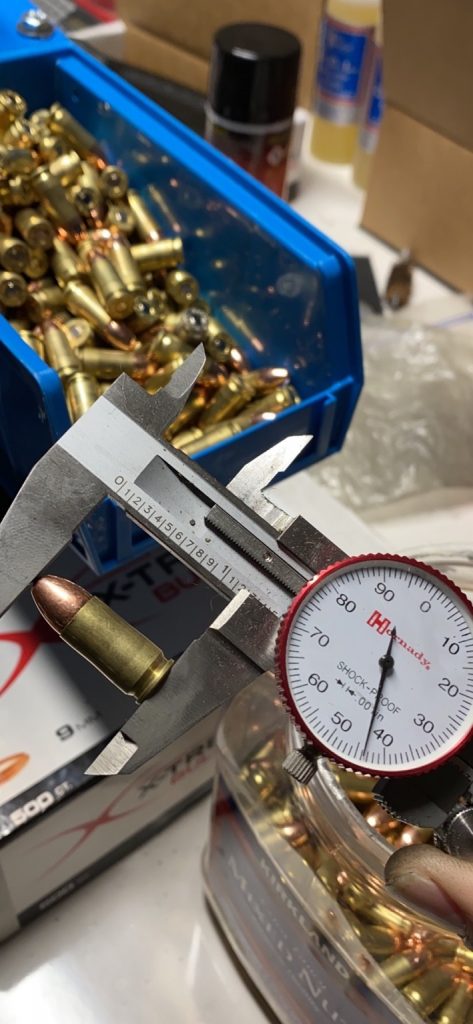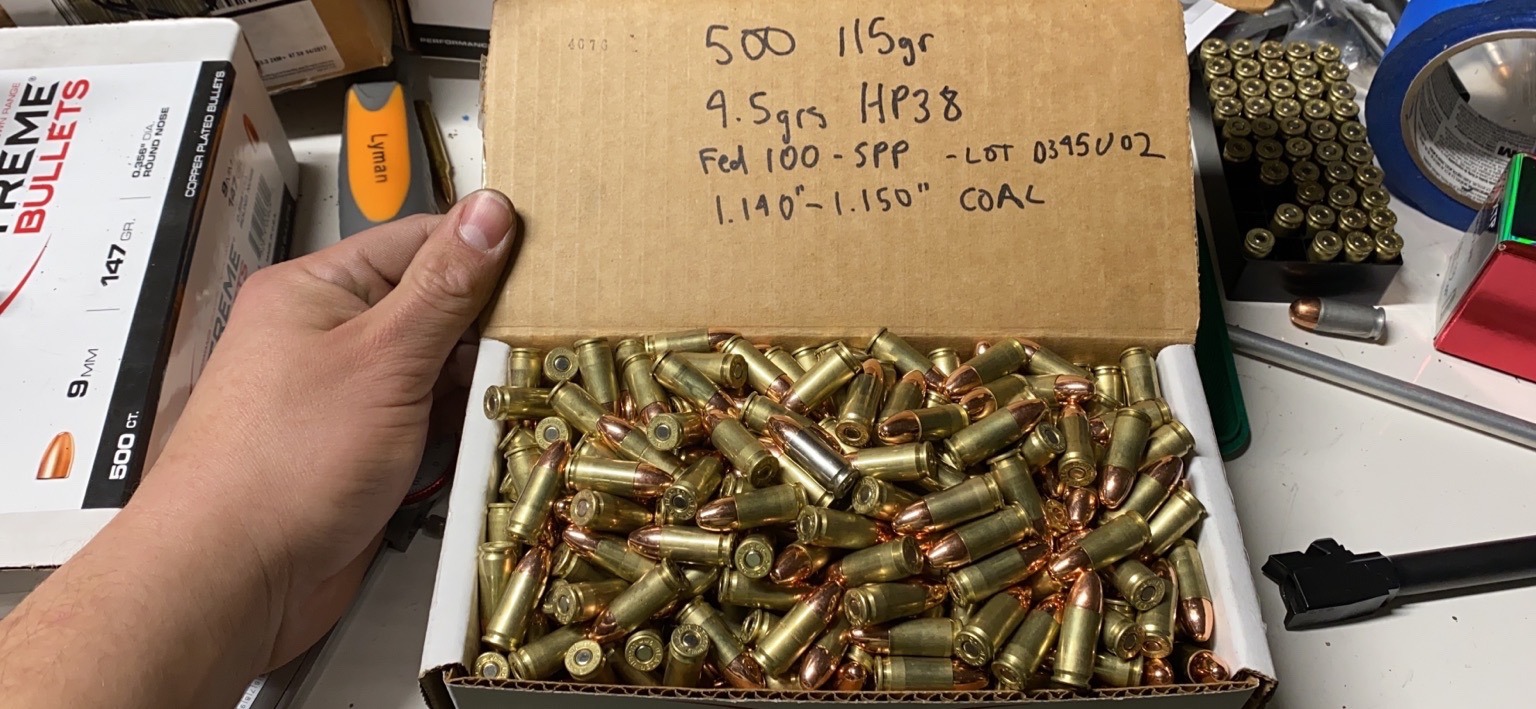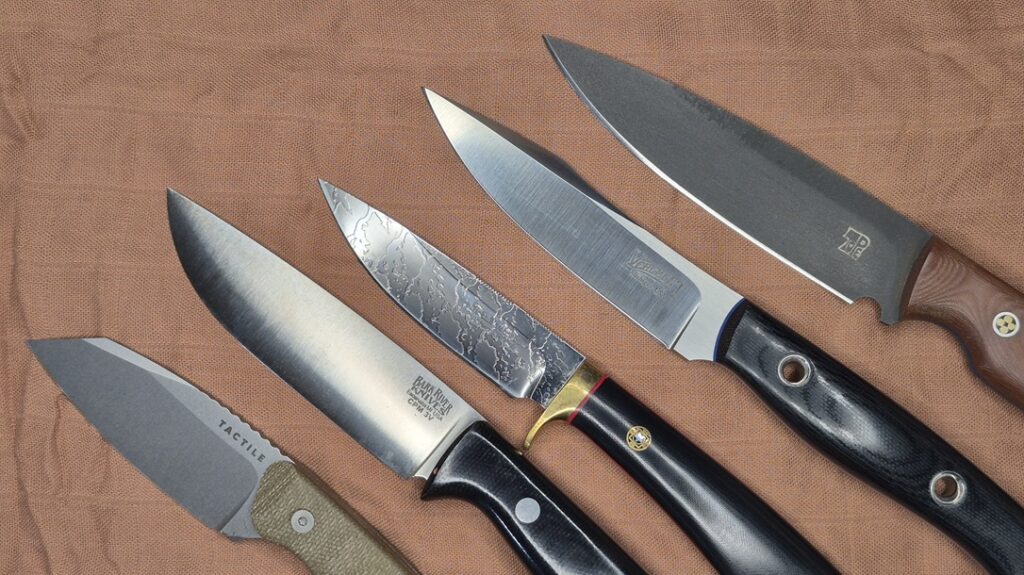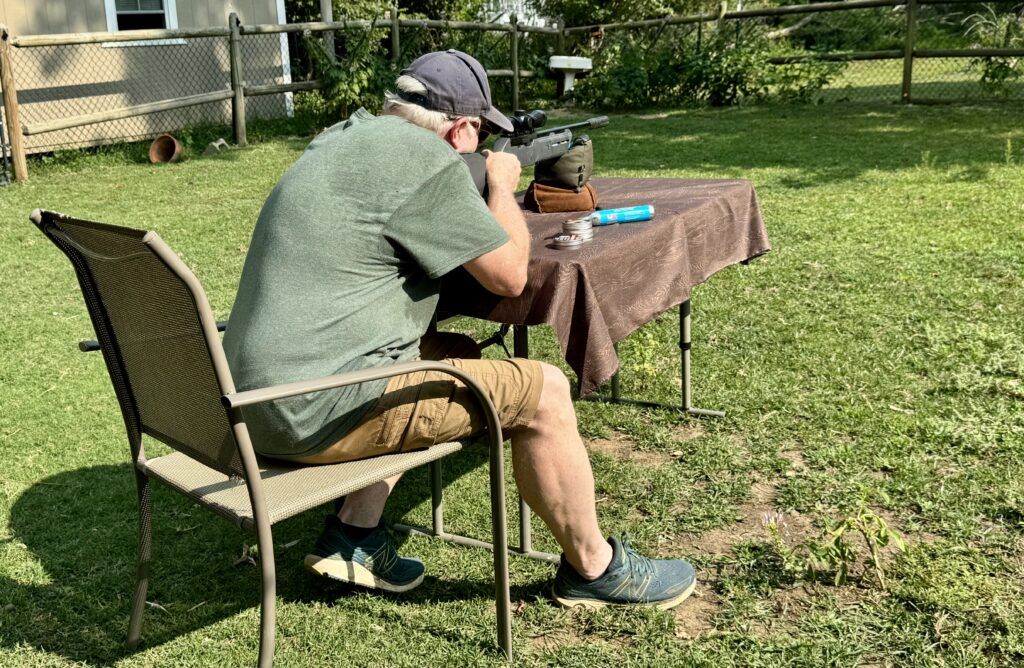Well, even if we’re not back in the clear to pre 2020 primer and ammunition availability, we are doing better now. Prices may not be what they once were but at least we can find product on shelves in my part of the country easily.
But during the darkest days of this pandemic induced shortage, I decided to experiment with small rifle primers in my 9mm Luger and .38 Special handloads. As with any other piece of writing concerning ammunition handloading, I am solely writing about my experiences alone and one should always exercise good judgment when it comes to replicating handloading data or techniques they see on the Internet.
For a number of years now, I’ve had a pet 9mm go-to load that I use for general purposes and works across my 9mm handguns. This load is as follows: A 115 grain coated lead or plated bullet sitting on top of 4.5 grains of Hodgdon HP-38 (or Winchester W231 powder because they’re literally the same thing). My Dillon machine is set up to seat the bullet at 1.150” cartridge overall length, which is something that I started to emulate from Speer Lawman factory ammo. I don’t have a preference between the coated lead and plated bullet, so I just typically use whatever is cheapest and/or available. I will use whatever brass I can pick up and process that is still suitable to be reloaded. I will typically use whatever small pistols primers I have on hand.
Advertisement — Continue Reading Below
If it wasn’t clear by now, this pet load of mine is all about economic efficiency. For ignition purposes, certain shooters have different primer preferences for their specific needs, but all I cared about was that Beretta 92 hammers with D-spring tension or stock Gen 5 Glock strikers could set them off.

So far I’ve sent rounds into berms using CCI, Sellier and Bellot, Wolf, Winchester, and Federal small pistol primers. To that list I can now add the Remington 6 ½ and the Federal 205 small rifle primers. For reference, the Remington 6 ½ primer is intended for the mildest centerfire rifle cartridges and isn’t even appropriate for 5.56mm ammo reloads with ARs. It’s actually not safe due to the cup hardness being too soft and the AR’s floating firing pin presenting a risk. However, I felt comfortable loading all one thousand of these and had no problems in the handguns I used them with. If memory serves correct, not only did I use these 6 ½s for my standard load, but also for a 147gr 9mm load using only 3.3 grains of HP-38 powder. I had no issues with full size Beretta 92s, Glocks 45 and 48, and even a Beretta APX Carry. The reason I even made a decision to use these primers in the first place was because I met up with a guy in a parking lot and bought them off him when store shelves were bare. I recall him being a precision rifle shooter and saying that those didn’t afford the level of consistency he needed. On the other hand, A-Zones and B-8 bulls aren’t that small, so I just wanted them to go bang!
Advertisement — Continue Reading Below
I came across the Federal 205 small rifle primers by chance on a day my local Scheel’s store had primers in stock and of course I took them feeling a little confident after my experience with those Remington primers. I used these Federal primers to load about 600 rounds of my pet 115 grain 9mm load and another 400 rounds of .38 Special handloads using a Berry’s 158 grain plated flat point bullet and 4 grains of HP38. I just wanted a “standard” load that I could use in my vintage K and J frame Smith and Wesson revolvers. Naturally, I wasn’t worried one bit about those heavy revolver hammers igniting these primers. As for those 600 rounds of 9mm Luger I loaded? They’re all in another berm after I used them up for a Citizen’s Defense Research “Tests and Standards” class last October. My heavy Beretta 92 X Performance gobbled them all up like skittles. The next time I see any Remington 6 ½ or Federal 205 primers available, I’m getting them.
But again, use caution when experimenting with your ammunition variations.

Advertisement — Continue Reading Below















